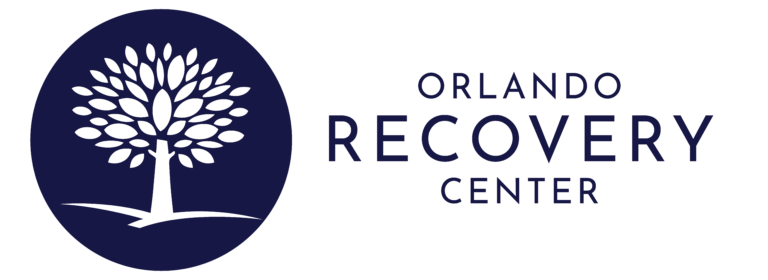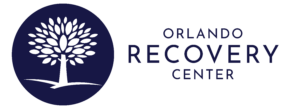There are a number of government organizations, nonprofits, and educational institutions dedicated to researching different drugs of abuse.
Goals are to better understand the threat of drug abuse and addiction and how it is impacting Americans, educate the public about the threat of different substances, and help to positively influence the medical community and policymakers so that legislative changes and medical improvements can be made to help addicts in need and their families.
Here are three of the most effective and prominent organizations in the United States dedicated to positively addressing the drug abuse problem in this country.
National Institutes on Health (NIH)
The National Institutes of Health (NIH) is an organization that is part of the US Department of Health and Human Services. It is made up of 27 institutes and centers. It is the premiere medical research agency in the United States, and for centuries, it has been a world leader in research and scientific discovery. In fact, 145 Nobel Prize winners have received funding and support from NIH, and it is likely due in large part to these and other NIH researchers that the life expectancy of Americans has increased from 47 years at the turn of the last century to 78 years as of 2009. Additionally, the rate of disability in senior adults over the age of 65 has decreased significantly in the last 30 years as well.
Treatment Can Be Life Changing
Whether you are struggling with addiction, mental health or both, our expert team is here to guide you every step of the way. Don’t wait— reach out today to take the first step toward taking control of your life.
In the realm of substance abuse and addiction treatment, NIH-funded studies have been instrumental in better understanding the nature of substance abuse and how it impacts the brain and the body as well as the treatments that can have a positive impact on health and healing among addicts in recovery.HistoryToday
The National Institutes of Health got its start in 1887 as a one-room lab in the Marine Hospital Service (MHS), an organization that would one day become the US Public Health Service. Infectious diseases and the microscopic organisms that were believed to be their cause were the original foci of early NIH research. The goal was to protect the public’s health and stop the outbreak of epidemics. A young doctor at MHS named Joseph J. Kinyoun was tasked with running the new lab, nicknamed a “laboratory of hygiene.”
Over the next century, the NIH played a critical role in the understanding of all manner of diseases from diabetes and obesity to cancer and heart disease – to substance abuse and addiction. The research funded by NIH has been critical to the development of lifesaving new treatments and treatment protocols that have been implemented around the world.
The mission of the National Institutes of Health is to build a better scientific understanding of how living systems work and to support the application of that understanding and knowledge to improve quality and length of life and to reduce the rate of illness and disability. The NIH is dedicated to:
- Supporting research and innovative research strategies that will ultimately improve and protect health and wellness
- Creating new resources to prevent disease
- Expanding the base of knowledge for the medical and scientific community
- Maintaining scientific integrity and remaining accountable to the public in conducting scientific research that is socially responsible
In the new millennium, NIH has contributed a great deal to the betterment of substance abuse treatment as well as contributed a large body of research that supports a more informed understanding of how different substances impact the brain and body in the short-term and the long-term.
For example, in 2001, the chronic nature of addiction and relapse that often characterizes attempted recovery were better understood when an animal study supported by an NIH Institute found that cravings for cocaine increased after the cessation of use rather than decreased. Crucial pieces of evidence like this not only help to inform other research that may seek to address the issue through evidence-based treatment but also aid the substance abuse treatment community, addicts, and their families in understanding the nature of the disease of addiction.
Currently, any who are interested can find specific and detailed scientific information on a range of health-related topics through the NIH, including information on:
- Specific diseases and disorders
- Research coming out of NIH
- Advice for addressing specific medical conditions
- Over-the-counter medications, prescription drugs, and street drugs
- Alternative medicine options
- Clinical trials
- Statistics
Families and their addicted loved ones can find out about specific drugs of abuse, how those drugs impact health, the treatment services that may best address patients dealing with dependence upon those substances, and how to connect with the right rehab program for their needs.
Substance Abuse and Mental Health Services Administration (SAMHSA)
The Substance Abuse and Mental Health Services Administration (SAMHSA) is part of the US Department of Health and Human Services (HHS) that spearheads public health campaigns that focus on improving the behavioral health of Americans. Families and their addicted loved ones can connect with SAMHSA to gain a better understanding of the effects of substance abuse and addiction disorders on the country at large, in their local community, and among different populations – and learn more about the treatment services that can jumpstart the healing process for all involved.
Increasing access to research and information that can empower individuals, families, and communities to overcome substance abuse and addiction is a needed service. SAMHSA reports that in 2014 alone, an estimated 20 million people were in need of substance abuse treatment services yet did not get the help they needed. The hope is that with increased access to information on drug and alcohol use disorders, there will be increased access to treatment for those in need.
History
In 1992, the Substance Abuse and Mental Health Services Administration was established by Congress with the goal of increasing access to research on the topics of mental health and substance abuse for the general public.
To empower this cause, the Center for Behavioral Health Statistics and Quality (CBHSQ) was created within SAMHSA. The CBHSQ focuses on data collection that can be utilized by the general public as well as by policymakers and researchers as they work to address the trends of substance abuse in certain areas and among certain populations by creating new prevention efforts and treatments, and increasing educational awareness.
Within CBHSQ, five data collection systems were created. They include:
- Emergency Department Data /DAWN: The Drug Abuse Warning Network surveys public health by monitoring emergency room visits in specific major metropolitan areas that are related to drugs of abuse. The specific substance or substances that triggered the ER visit are recorded as are the health issues connected to use of that substance and the impact on the individual and the community.
- Substance Abuse Facilities Data /NSSATS: The National Survey on Substance Abuse Treatment Services is a yearly census of all public and private drug and alcohol rehab programs in the country.
- Mental Health Facilities Data /NMHSS: The National Mental Health Services Survey is a yearly survey of all public and private mental health treatment programs in the country.
- Client Level Data /TEDS: The Treatment Episode Data Set takes note of the characteristics and demographics of clients who are admitted to and discharged from rehabilitation programs for the treatment of drug abuse and addiction.
- Population Data /NSDUH: The National Survey on Drug Use and Health surveys the patterns, prevalence, and effects of use of a range of substances as well as mental health disorders in Americans over the age of 12.
Mission
The mission of the Substance Abuse and Mental Health Services Administration is to mitigate the harm caused by mental health issues and substance abuse and addiction disorders in the United States. Their goal is to communicate to the general public that:
- Behavioral health and wellness is imperative for high quality of life.
- Prevention efforts are effective.
- Treatment for substance abuse and mental health disorders works.
- Recovery is possible.
Today
SAMHSA offers a range of information for the general public, including families and their addicted loved ones who are struggling with drug abuse and addiction. On their website, they offer round-the-clock access to drug and alcohol data, information on treatment services, issues related to drugs in the workplace, and more.
SAMHSA also offers updates via Facebook and Twitter to inform the public on the release of new reports pertaining to drug and alcohol use data in the US. Some recent reports related to substance use and abuse in the US include:
- Trends in Heroin Use in the United States: 2002 to 2013
- Benzodiazepines in Combination with Opioid Pain Relievers or Alcohol: Greater Risk of More Serious ED Visit Outcomes
- Update: Drug-Related Emergency Department Visits Involving Synthetic Cannabinoids
- Results from the 2013 National Survey on Drug Use and Health: Summary of National Findings
Families and their addicted loved ones can learn more about what is happening in their communities in terms of drug and alcohol abuse and get involved in prevention efforts and/or connect with treatment services through SAMHSA.
National Institute on Drug Abuse (NIDA)
The National Institute on Drug Abuse (NIDA) is one of the institutes under the National Institutes of Health. It is responsible for funding more research on drug abuse and addiction than any other agency in the world. Many NIDA-funded studies focus on achieving a deep and essential understanding of substance abuse by looking at topics that include:
- Following new trends in drug use and abuse
- Identifying the function of different substances in the brain and body
- Creating and testing new prevention methods and treatments
Additionally, NIDA seeks to educate the public and keep them updated on their new findings and how these findings may indicate the need for changes in legislation, medical care, or prevention efforts.HistoryMissionToday
The National Institute on Drug Abuse was first established as a research facility connected to the US Public Health Service in 1935, and in 1948, it became known as the Addiction Research Center. In 1974, NIDA was designated as the point organization for data collection, research, and training that would increase the prevention of substance abuse and improve treatment services. By 1985, the organization began publishing a bimonthly newsletter called NIDA Notes that included updates on the findings of new research and surveys.
In 1990, the Medications Development Program was established by NIDA to focus on creating new pharmacological options for addicts in recovery. The organization was instrumental in the process of getting medications like levomethadyl acetate (LAAM) and buprenorphine approved for the treatment of opiate addiction.
In 1992, NIDA became a part of the National Institutes of Health and, throughout the 1990s and into the new millennium, held conferences and released resource materials designed to aid parents, teachers, and medical professionals in helping to prevent the use of drugs among children and teens.
The mission of the National Institute on Drug Abuse is to increase the scientific understanding of how drug use and abuse impacts the brain and the body with the goal of creating and testing new successful treatment methods. Additionally, NIDA works to support the education of the public on the impact of drug use and abuse, collaborate with other research organizations that are working to better understand substance abuse and addiction, and create funding opportunities for drug-related research here and abroad.
In 2010, NIDA worked with two NIH Institutes and the Department of Veteran Affairs to grant $6 million in federal funding to 11 research institutions with the goal of researching the impact of substance abuse and related issues on US military personnel, retirees, veterans, and their families.
In 2011, NIDA turned its attention to the stigma associated with drug use and abuse – an issue that is often an obstacle to those who need treatment – by creating the Addiction Performance Project (APP), an outreach project to educate medical professionals in cities across the country.
In 2012, NIDA created an online resource for parents called Family Checkup that provides families with the drug-related information they need to help their children avoid drug abuse and addiction.
In 2014, an NIDA-supported dataset called the Consortium for Reproducibility and Reliability (CoRR) was made available to researchers that includes 10,000 brain images, allowing them to more easily compare their MRI-based scans with the goal of increasing research reliability and reproducibility.
The public can keep up with new research and resources provided by NIDA by connecting with them on Facebook and Twitter.
Treatment Is the First Step
Information is essential to gaining a better understanding of how drug use and abuse can add up to addiction and life-altering consequences. Learn more about treatment services that can help your loved one heal today. Contact Orlando Recovery Center now.








